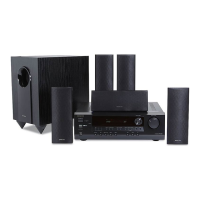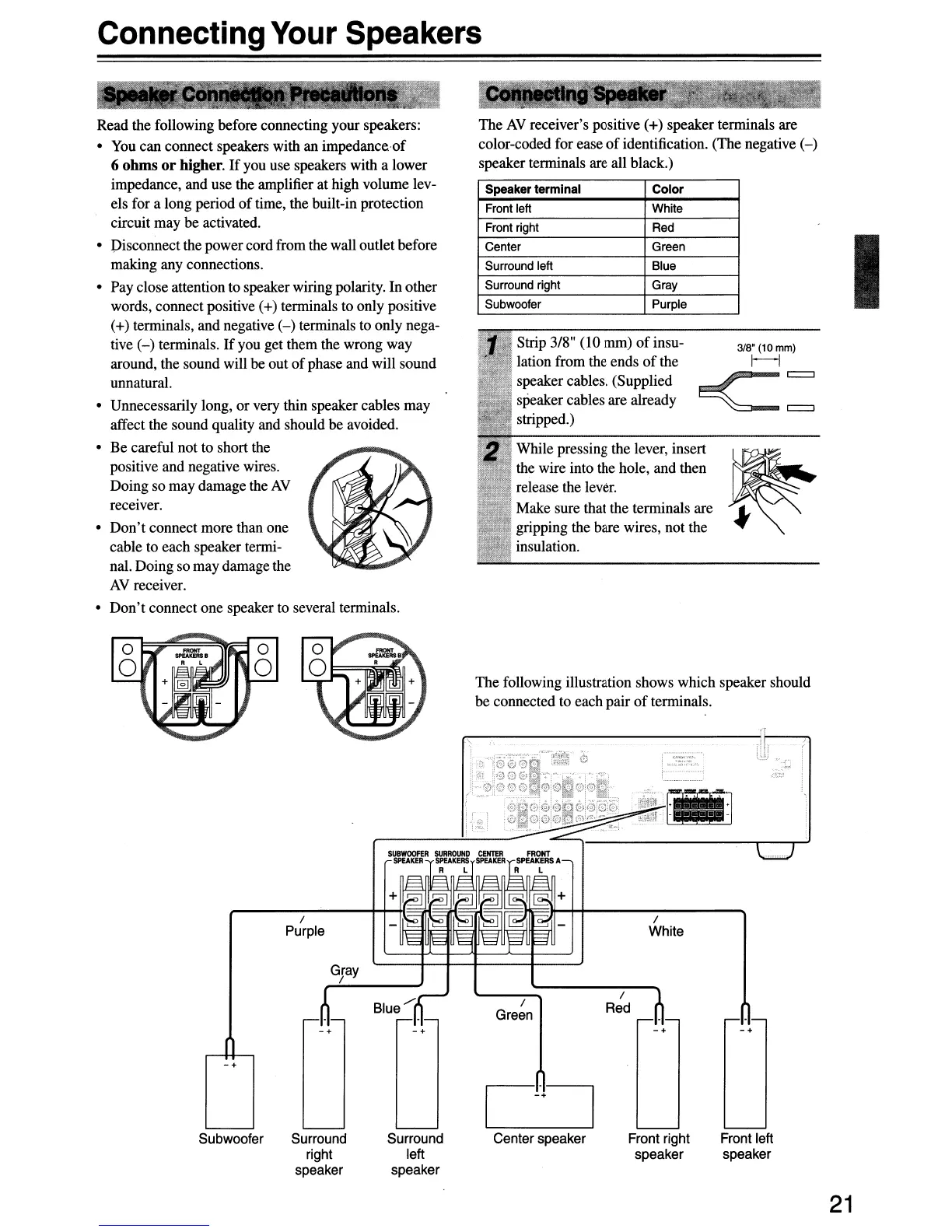Connecting
Your
Speakers
The
AV
receiver's positive (+) speaker terminals are
color-coded for ease
of
identification. (The negative
(-)
speaker terminals are all black.)
Speaker terminal Color
Front
left
White
Front
right
Red
Center
Green
Surround
left
Blue
Surround
right
Gray
Subwoofer
Purple
While pressing the lever, insert
~
the wire into the hole, and then
release the lever.
Make sure that the terminals are "
gripping the bare wires, not the
..
insulation.
I
318'
(10mm)
r-------l
<::
Strip 3/8" (10 mm)
of
insu-
lation from the ends
of
the
speaker cables. (Supplied
speaker cables are already
stripped.)
Read the following before connecting your speakers:
• You can connect speakers with an impedance
of
6
ohms
or
higher.
If
you use speakers with a lower
impedance, and use the amplifier at high volume lev-
els for a long period
of
time, the built-in protection
circuit may be activated.
• Disconnect the power cord from the wall outlet before
making any connections.
• Pay close attention to speaker wiring polarity.
In
other
words, connect positive
(+) terminals to only positive
(+) terminals, and negative
(-)
terminals to only nega-
tive
(-)
terminals.
If
you get them the wrong way
around, the sound will be out
of
phase and will sound
unnatural.
• Unnecessarily long,
or
very thin speaker cables may
affect the sound quality and should
be
avoided.
• Be careful not to short the
positive and negative wires.
Doing so may damage the
AV
receiver.
•
Don't
connect more than one
cable to each speaker termi-
nal. Doing so may damage the
AV
receiver.
•
Don't
connect one speaker to several terminals.
The following illustration shows which speaker should
be connected to each pair
of
terminals.
•
...
"'!'"
. .
. .
-+
-+
/
White
/
Red
/
Green
-+-+
/
Purple
-+
C-'+~
Subwoofer Surround
right
speaker
Surround
left
speaker
Center speaker
Front right
speaker
Front left
speaker
21

